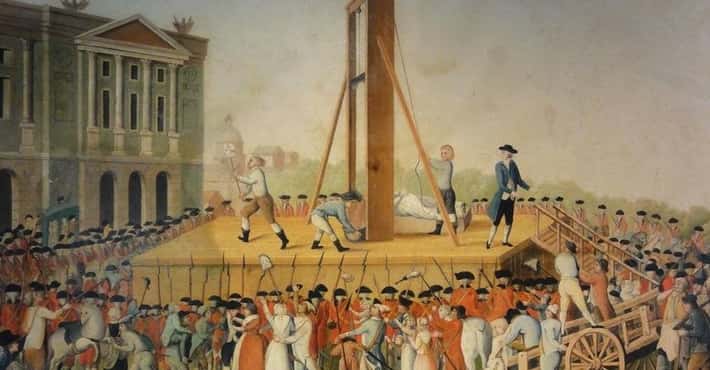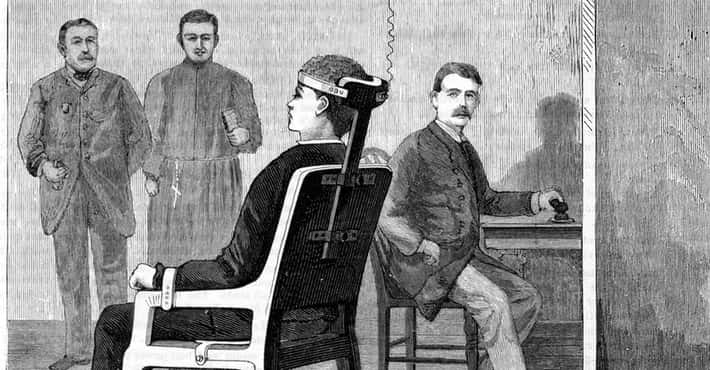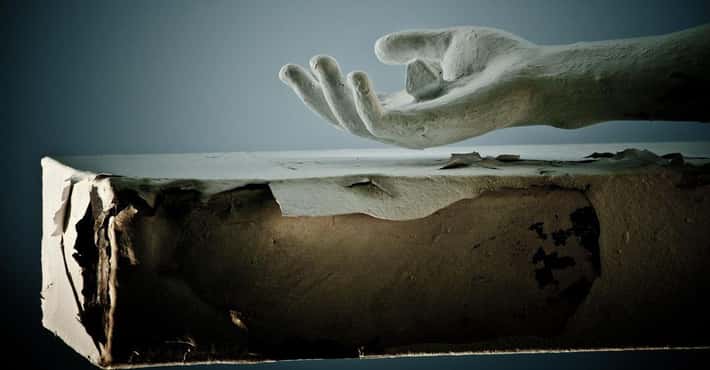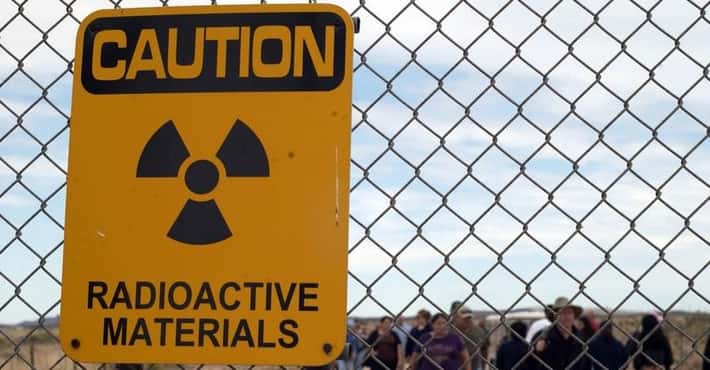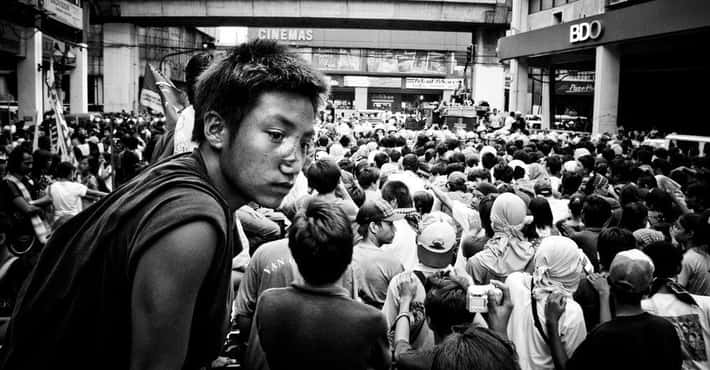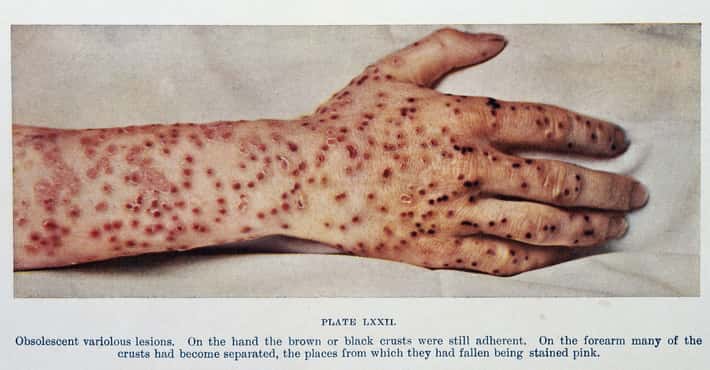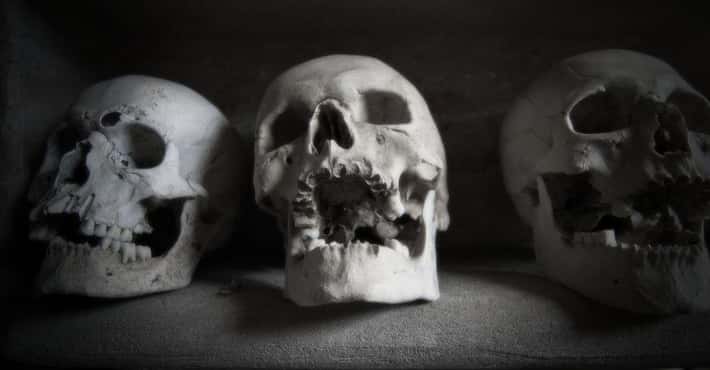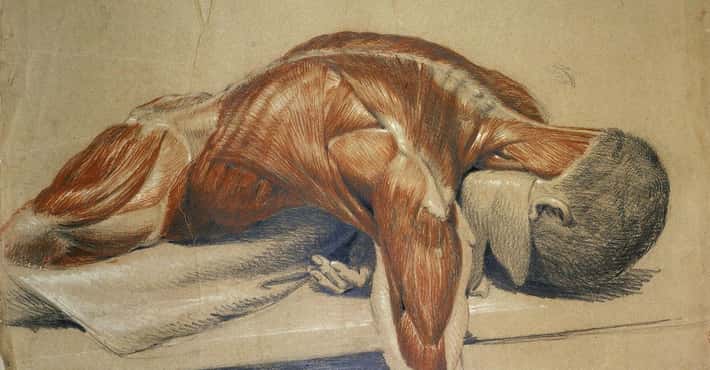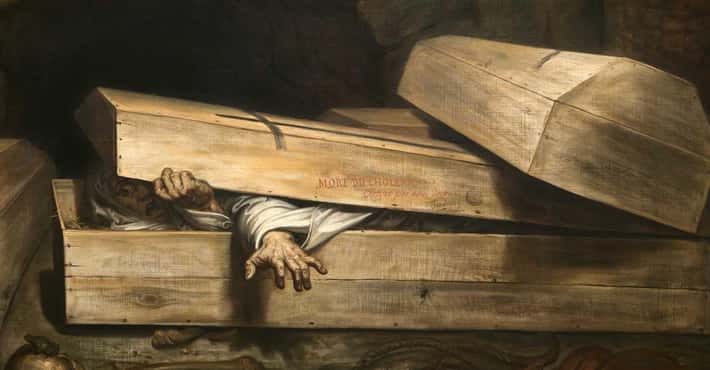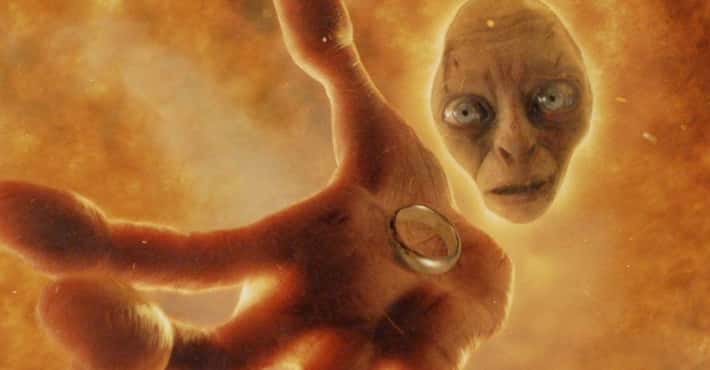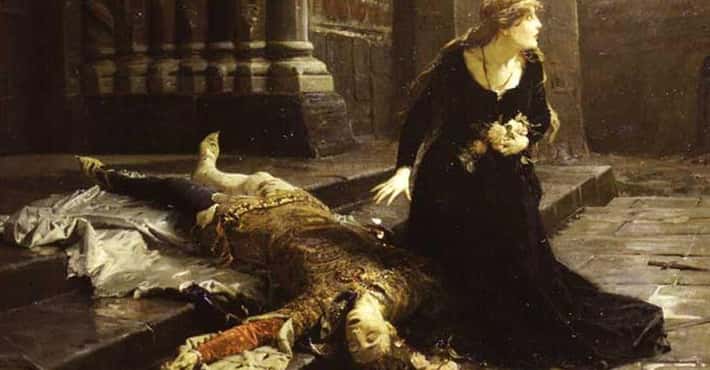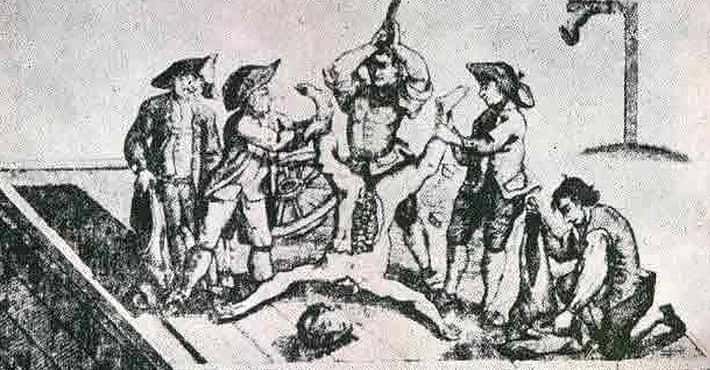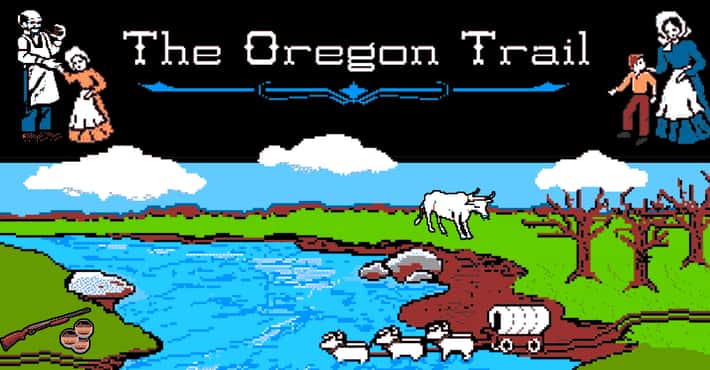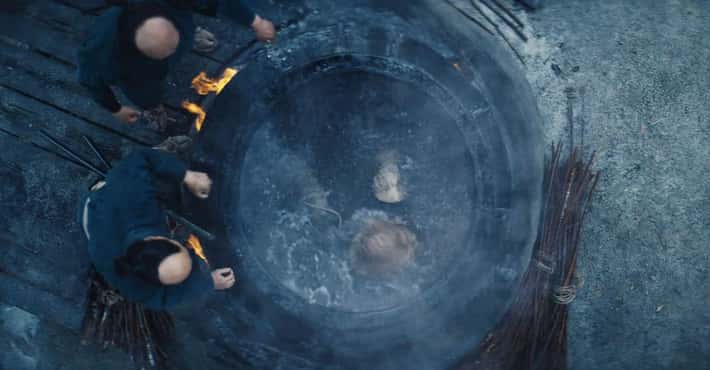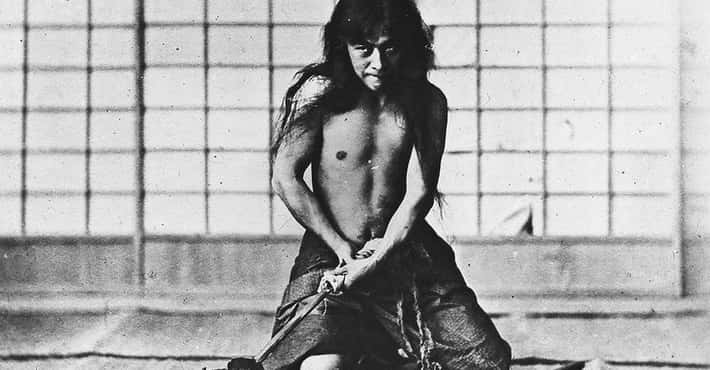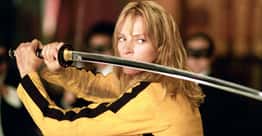List of famous people who were decapitated, including photos, birthdates, professions, and other information. These celebrities who were decapitated are listed alphabetically and include the famous decapitation victims’ hometown and biographical info about them when available.
Beheaded people on this list include Kara Mahmud Bushati and Vic Morrow.
These notable decapitation deaths include modern and long-gone famous men and women, from politicians to religious leaders to writers. Everyone on this list has decapitation as a cause of death somewhere in their public records, even if it was just one contributing factor for their death.Helmut Hirsch
Helmut Hirsch (January 27, 1916 in Stuttgart – June 4, 1937 in Berlin) was a German Jew who was executed for his part in a bombing plot intended to destabilize the German Reich. Although a full and accurate account of the plot is unknown, his targets were understood to be the Nazi party headquarters in Nuremberg, (Germany), and/or the plant where the antisemitic weekly propaganda newspaper Der Stürmer was printed.Max Matern
Max Matern (19 January 1902 – 22 May 1935) was a member of the Communist Party of Germany (KPD). Max Matern was a communist who was convicted of murder and executed for his involvement in the assassinations of Police Captains Paul Anlauf and Franz Lenck. The murders took place in 1931 at Bülow-Platz in Berlin. He was later glorified as a martyr by the KPD and East Germany's Socialist Unity Party of Germany (SED).- Photo: Metaweb (FB) / Public domain
Francisco Hernández de Córdoba
There were two Spanish conquistadores at the start of the 16th-century named Francisco Hernández de Córdoba. The one described here founded Nicaragua. The other led a 1517 expedition which provided the first European accounts of the Yucatán Peninsula: see Francisco Hernández de Córdoba (Yucatán conquistador). Neither of their birth dates are known. Francisco Hernández de Córdoba (Spanish: [fɾanˈθisko eɾˈnãndeθ ðe ˈkoɾðoβa]; 1475 ? - 1526) is usually reputed as the founder of Nicaragua, and in fact he founded two important Nicaraguan cities, Granada and León. The currency of Nicaragua is named the córdoba in his memory. Córdoba was an officer of Pedro Arias Dávila, known also as Pedrarias Dávila. Hernán Cortés and Hernán Ponce de León supported Córdoba during the conquest of Nicaragua in 1524, in return for support against Cristóbal de Olid. Dávila considered Córdoba an insurrectionist and a traitor, and finally captured and beheaded him.His remains were found in 2000 in León Viejo, Nicaragua. - Photo: Metaweb (FB) / Public domain
Charles Emil Lewenhaupt
Charles Emil Lewenhaupt the Elder (28 March 1691 – 4 August 1743) was a Swedish general. Lewenhaupt was born to Count Carl Gustaf Löwenhaupt and Countess Amalia Königsmarck. At the age of 16, he entered Dutch service where he was promoted to the rank of captain in 1709. A year later he entered Swedish service. He was promoted to lieutenant colonel and participated at the battle of Gadebusch in 1712. In 1720, Lewenhaupt married Beata Cronhielm. The couple had one son, Charles Emil Lewenhaupt the Younger. In 1722, he was promoted to major general. At the Riksdag of the Estates of 1741, he was a factor in the decision to wage war against Imperial Russia, in what became the Russo-Swedish War of 1741–1743. Following the war, on 20 June 1743, Lewenhaupt was sentenced to death on grounds of poor performance and conduct in the war. The execution was set to 20 July, and later postponed to 30 July. Lewenhaupts' son and a small party managed to free him, but Lewenhaupt was re-arrested when aboard a vessel in the Stockholm archipelago bound for Danzig. On 4 August 1743, Lewenhaupt was decapitated at Norrtull in Stockholm. - Photo: Metaweb (FB) / Public domain
Sante Geronimo Caserio
Sante Geronimo Caserio (Italian: [ˈsante caˈzɛrjo]; 8 September 1873 – 16 August 1894) was an Italian anarchist and the assassin of Marie François Sadi Carnot, President of the French Third Republic. Caserio was born in Motta Visconti, Lombardy. On 24 June 1894, he fatally stabbed President Carnot after a banquet, to avenge Auguste Vaillant and Émile Henry. Nikolaus Gross
Blessed Nikolaus Gross (German: Groß) (30 September 1898 – 23 January 1945) was a German Roman Catholic. Gross first worked in professions requiring skilled labor before becoming a coal miner like his father while joining a range of trade union and political movements. But he soon settled on becoming a journalist before he got married while World War II prompted him to become a resistance fighter in the time of the Third Reich and for his anti-violent rhetoric and approach to opposing Adolf Hitler. He was also one of those implicated and arrested for the assassination attempt on Hitler despite not being involved himself.His cause for sainthood saw it acknowledged that Gross had died in 1945 "in odium fidei" (in hatred of the faith) which allowed for Pope John Paul II to preside over the beatification for the murdered journalist on 7 October 2001 in Saint Peter's Square.- Photo: Emme Debi / flickr / CC-BY-NC 2.0
Henry Pole, 1st Baron Montagu
Henry Pole, 1st Baron Montagu (also written Montague or Montacute; circa 1492 – January 1539), the only holder of the title Baron Montagu under its 1514 creation, was one of the relatives whom King Henry VIII of England had executed for treason. - Photo: Metaweb (FB) / Public domain
Richard Empson
Sir Richard Empson (c. 1450 – 17 August 1510), minister of Henry VII, was a son of Peter Empson. Educated as a lawyer, he soon attained considerable success in his profession, and in 1491 was a Knight of the shire for Northamptonshire in Parliament, and Speaker of the House of Commons. Fra' Moriale
Montréal de Albarno, also known as Fra Moriale (1315 ? –August 1354) was a Provençal mercenary and condottiero.Adolf Schlagintweit
Adolf von Schlagintweit (9 January 1829 – 26 August 1857) was a German botanist and explorer of Central Asia. The standard author abbreviation A.Schlag. is used to indicate this individual as the author when citing a botanical name.Eulogius of Córdoba
Saint Eulogius of Córdoba (Spanish: San Eulogio de Córdoba (died March 11, 857) was one of the Martyrs of Córdoba. He flourished during the reigns of the Cordovan emirs Abd-er-Rahman II and Muhammad I (mid-9th century).Stan Woodbridge
Flight Sergeant Stanley James Woodbridge, (29 August 1921 – 7 February 1945), known as Stan Woodbridge, was a British World War II recipient of the George Cross. He was born in Chelsea, London, and during World War II served as a member of the Royal Air Force Volunteer Reserve, with No. 159 Squadron RAF. Woodbridge was captured by Japanese forces along with five other members of his crew, when their Consolidated Liberator aircraft crashed in Burma. Woodbridge, who was the crew's wireless operator, was subjected to torture, and was eventually beheaded along with the three other non-commissioned officers from his crew. The two commissioned officers from the crew were taken to Rangoon Jail and found alive when Rangoon was liberated. Throughout his ordeal, Woodbridge refused to give information to his Japanese captors about his codes or radio equipment. In 1948, Woodbridge was posthumously awarded the George Cross in recognition of his courage and devotion to duty. Woodbridge is buried at the Rangoon War Cemetery.Ishida Mitsunari
Ishida Mitsunari (石田 三成, 1559 – November 6, 1600) was a Japanese samurai and military commander of the late Sengoku period of Japan. He is probably best remembered as the commander of the Western army in the Battle of Sekigahara following the Azuchi–Momoyama period of the 16th century. He is also known by his court title, Jibu-no-shō (治部少輔).- Photo: Metaweb (FB) / Public domain
Marino Faliero
Marino Faliero (1274 – 17 April 1355) was the 55th Doge of Venice, appointed on 11 September 1354. He was sometimes referred to simply as Marin Falier (Venetian rather than standard Italian) or Falieri. He was executed for attempting a coup d'etat. Francis Ferdinand de Capillas
Francis Fernández (or Ferdinand) de Capillas, O.P. (15 August 1607 – 15 January 1648) was a Spanish Dominican friar who went as a missionary to Asia. He died in China as a martyr. He was canonized by Pope John Paul II on 1 October 2000, as one of the 120 Martyrs of China.Capillas is honored by the Holy See as the protomartyr among the missionaries in China, and is considered the glory and pride of the Dominican Order.- Photo: Metaweb (FB) / Public domain
Francis Weston
Sir Francis Weston KB (1511 – 17 May 1536) was a gentleman of the Privy Chamber at the court of King Henry VIII of England. He became a friend of Henry VIII and was accused of high treason and adultery with Anne Boleyn, the king's second wife. Weston was condemned to death, together with George Boleyn, Viscount Rochford, Henry Norris, William Brereton and Mark Smeaton. They were all executed on 17 May 1536, two days before the Queen. - Photo: Metaweb (FB) / Public domain
Hemu
Hemu (; also known as Hemu Vikramaditya and Hemchandra Vikramaditya) (died 5 November 1556) was a Hindu king who previously served as a general and Chief Minister of Adil Shah Suri of the Suri Dynasty during a period in Indian history when the Mughals and Afghans were vying for power across North India. He fought Afghan rebels across North India from the Punjab to Bengal and the Mughal forces of Humayun and Akbar in Agra and Delhi, winning 22 battles for Adil Shah.Hemu claimed royal status after defeating Akbar's Mughal forces on 7 October 1556 in the Battle of Delhi and assumed the ancient title of Vikramaditya that had been adopted by many Hindu kings in the past. A month later, Hemu was wounded by a chance arrow and captured unconscious during the Second Battle of Panipat. Akbar's regent, Bairam Khan beheaded almost dead Hemu shortly thereafter. - Photo: Metaweb (FB) / Public domain
Aquilina
Aquilina (281–293) was a Christian child from Byblos, Lebanon. At that time, the Church wasn't yet divided and only one Church existed. - Photo: Metaweb (FB) / Public domain
Jerónimo Luis de Cabrera
Jerónimo Luis de Cabrera (Sevilla, Spain, 1528 – Lima, 17 August 1574) was a Spanish conquistador, early colonial governor over much of what today is northwestern Argentina, and founder of the city of Córdoba. - Photo: Metaweb (FB) / Public domain
Pietro Carnesecchi
Pietro Carnesecchi (24 December 1508 – 1 October 1567) was an Italian humanist. - Photo: Metaweb (FB) / Public domain
Edward Stafford, 3rd Duke of Buckingham
Edward Stafford, 3rd Duke of Buckingham (3 February 1478 – 17 May 1521) was an English nobleman. He was the son of Henry Stafford, 2nd Duke of Buckingham, and Katherine Woodville, and nephew of Elizabeth Woodville and King Edward IV. Thus Edward Stafford was a first cousin once removed of King Henry VIII. He was convicted of treason and executed on 17 May 1521. Shosei Koda
Shosei Koda (香田 証生, Kōda Shōsei, 29 November 1979 – 29 October 2004) was a Japanese citizen who was kidnapped and later beheaded in Iraq on 29 October 2004, by Zarqawi's group, while touring the country. He was the first Japanese person beheaded in Iraq.- Photo: Metaweb (FB) / Public domain
Wigbolt Ripperda
Wigbolt, Baron Ripperda (1535? – 16 July 1573) was the city governor of Haarlem when the city was under siege by the Spanish army in the Eighty Years' War. - Photo: Metaweb (FB) / Public domain
Henry Rich, 1st Earl of Holland
Henry Rich, 1st Earl of Holland (19 August 1590 (baptised) – 9 March 1649), known as Lord Kensington between 1623 and 1624, a member of the influential Rich family, was an English courtier, peer and soldier. - Photo: Metaweb (FB) / Public domain
Henry Stafford, 2nd Duke of Buckingham
Henry Stafford, 2nd Duke of Buckingham, KG (4 September 1455 – 2 November 1483) was an English nobleman known as the namesake of Buckingham's rebellion, a failed but significant collection of uprisings in England and parts of Wales against Richard III of England in October 1483. He is also one of the primary suspects in the disappearance (and presumed murder) of the Princes in the Tower. - Photo: Metaweb (FB) / CC-BY-2.5
Crescentius the Younger
Crescentius the Younger (or Crescentius II) (died 998), son of Crescentius the Elder, was a leader of the aristocracy of medieval Rome. During the minority of Holy Roman Emperor Otto III, he declared himself Consul (or Senator) of Rome (Patricius Romanorum) and made himself de facto ruler of Rome. After being deposed, he led a rebellion, seized control of Rome, and appointed an antipope, but the rebellion failed and Crescentius was eventually executed. Ankokuji Ekei
Ankokuji Ekei (安国寺 恵瓊, 1539 – November 6, 1600) was a diplomat of Mōri clan, a powerful feudal clan in the Chūgoku region, Japan, as well as a Rinzai Buddhist monk following the Azuchi-Momoyama period of the 16th century. He fought in the Shikoku campaign for Toyotomi Hideyoshi, and was given a fiefdom of 23,000 koku in Iyo Province as a reward. He participated in the Imjin War, and lost the Battle of Uiryong to Gwak Jae-u.He participated in the Siege of Shimoda.When he fought against Tokugawa Ieyasu at the Battle of Sekigahara (1600), he was taken prisoner and later decapitated in Kyoto, along with Ishida Mitsunari and Konishi Yukinaga.Mons Somby
Mons Aslaksen Somby (14 February 1825 – 14 October 1854) was one of the leaders of the Sami rioters that attacked several Norwegian shops during the Kautokeino rebellion of 1852. During the uprising a merchant and the town sheriff were killed and others were whipped. Several buildings were also destroyed during the riots. Somby was executed by beheading in 1854. Mons Aslaksen Somby was married to Inger Johannesdatter Hætta, with whom he had a son.Kim Sun-il
Kim Sun-il (13 September 1970 – c. 22 June 2004) was a South Korean interpreter and Christian missionary who was kidnapped and murdered in Iraq.William Stanley
Sir William Stanley KG (c. 1435 – 16 February 1495) was an English soldier and the younger brother of Thomas Stanley, 1st Earl of Derby. Stanley fought with his troops in several battles of the Wars of the Roses.





















